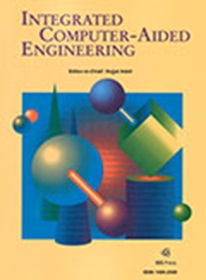Improving landslide prediction by computer vision and deep learning
IF 5.3
2区 计算机科学
Q1 COMPUTER SCIENCE, ARTIFICIAL INTELLIGENCE
引用次数: 0
Abstract
The destructive power of a landslide can seriously affect human beings and infrastructures. The prediction of this phenomenon is of great interest; however, it is a complex task in which traditional methods have limitations. In recent years, Artificial Intelligence has emerged as a successful alternative in the geological field. Most of the related works use classical machine learning algorithms to correlate the variables of the phenomenon and its occurrence. This requires large quantitative landslide datasets, collected and labeled manually, which is costly in terms of time and effort. In this work, we create an image dataset using an official landslide inventory, which we verified and updated based on journalistic information and interpretation of satellite images of the study area. The images cover the landslide crowns and the actual triggering values of the conditioning factors at the detail level (5 × 5 pixels). Our approach focuses on the specific location where the landslide starts and its proximity, unlike other works that consider the entire landslide area as the occurrence of the phenomenon. These images correspond to geological, geomorphological, hydrological and anthropological variables, which are stacked in a similar way to the channels of a conventional image to feed and train a convolutional neural network. Therefore, we improve the quality of the data and the representation of the phenomenon to obtain a more robust, reliable and accurate prediction model. The results indicate an average accuracy of 97.48%, which allows the generation of a landslide susceptibility map on the Aloag-Santo Domingo highway in Ecuador. This tool is useful for risk prevention and management in this area where small, medium and large landslides occur frequently.利用计算机视觉和深度学习改进滑坡预测
山体滑坡的破坏力会对人类和基础设施造成严重影响。对这种现象的预测是非常有趣的;然而,这是一项复杂的任务,传统方法有其局限性。近年来,人工智能已成为地质领域的成功替代方案。大多数相关工作使用经典的机器学习算法来关联现象的变量及其发生。这需要大量的滑坡数据集,手工收集和标记,这在时间和精力方面都是昂贵的。在这项工作中,我们使用官方滑坡清单创建了一个图像数据集,并根据新闻信息和对研究区域卫星图像的解释对其进行了验证和更新。图像覆盖了滑坡冠体和各条件因子在细节级(5 × 5像素)的实际触发值。我们的方法侧重于滑坡开始的特定位置及其邻近程度,而不像其他工作那样将整个滑坡区域视为现象的发生。这些图像对应于地质、地貌、水文和人类学变量,它们以与传统图像通道类似的方式堆叠,以馈送和训练卷积神经网络。因此,我们提高了数据的质量和现象的表征,以获得更稳健、可靠和准确的预测模型。结果表明,平均精度为97.48%,可以在厄瓜多尔阿罗格-圣多明各高速公路上生成滑坡易感性图。这个工具对这个经常发生小、中、大型滑坡的地区的风险预防和管理很有用。
本文章由计算机程序翻译,如有差异,请以英文原文为准。
求助全文
约1分钟内获得全文
求助全文
来源期刊

Integrated Computer-Aided Engineering
工程技术-工程:综合
CiteScore
9.90
自引率
21.50%
发文量
21
审稿时长
>12 weeks
期刊介绍:
Integrated Computer-Aided Engineering (ICAE) was founded in 1993. "Based on the premise that interdisciplinary thinking and synergistic collaboration of disciplines can solve complex problems, open new frontiers, and lead to true innovations and breakthroughs, the cornerstone of industrial competitiveness and advancement of the society" as noted in the inaugural issue of the journal.
The focus of ICAE is the integration of leading edge and emerging computer and information technologies for innovative solution of engineering problems. The journal fosters interdisciplinary research and presents a unique forum for innovative computer-aided engineering. It also publishes novel industrial applications of CAE, thus helping to bring new computational paradigms from research labs and classrooms to reality. Areas covered by the journal include (but are not limited to) artificial intelligence, advanced signal processing, biologically inspired computing, cognitive modeling, concurrent engineering, database management, distributed computing, evolutionary computing, fuzzy logic, genetic algorithms, geometric modeling, intelligent and adaptive systems, internet-based technologies, knowledge discovery and engineering, machine learning, mechatronics, mobile computing, multimedia technologies, networking, neural network computing, object-oriented systems, optimization and search, parallel processing, robotics virtual reality, and visualization techniques.
 求助内容:
求助内容: 应助结果提醒方式:
应助结果提醒方式:


